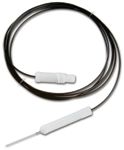Article
Transconjunctival sutureless vitrectomy evolves
With the instrumentation enhancements, it is easier for the surgeon to deal with peripheral pathology.
Bausch & Lomb has introduced a line of enhanced instruments for 25-gauge transconjunctival sutureless vitrectomy that addresses several critical issues, resulting in higher performance and a higher standard of care, according to Steven D. Schwartz, MD, chief of the retina division at the Jules Stein Eye Institute and associate professor of ophthalmology at UCLA's David Geffen School of Medicine, Los Angeles.

"I've used all of the 25-gauge systems, and this represents an evolutionary step within the Bausch & Lomb universe. This is a major advance," he said. "The trocars in the ESA system are much sharper, allowing for an even easier entry into the vitreous cavity. Also, studies have suggested that the ESA system has a very favorable wound-healing profile, and this new model maintains that potential advantage," he added.

"With instruments that are less malleable and hold their shape better, precision increases and 25-gauge procedures become safer for a broader range of patients. A set of higher-performance instruments allows one to deliver a higher standard or quality of care," Dr. Schwartz said.

"All those modifications represent substantial improvements to what is already an excellent system," Dr. Schwartz said.

Philip Ferrone, MD, a vitreoretinal specialist in Long Island and Queens, NY, who has conducted extensive research on wound healing with various 25-gauge entry systems, also noted the improvements in the alignment system. He explained that for the second-generation ESA, B&L changed the design of the cannula but kept the trocar portion the same. Thus the wound architecture, which was considered an advantage of the earlier instruments, was retained while the new design made it easier to load microsurgical instruments.
"What that led to was an easy-to-introduce cannula system with excellent healing of small wounds that are relatively atraumatic," Dr. Ferrone said.
Newsletter
Don’t miss out—get Ophthalmology Times updates on the latest clinical advancements and expert interviews, straight to your inbox.





